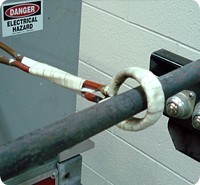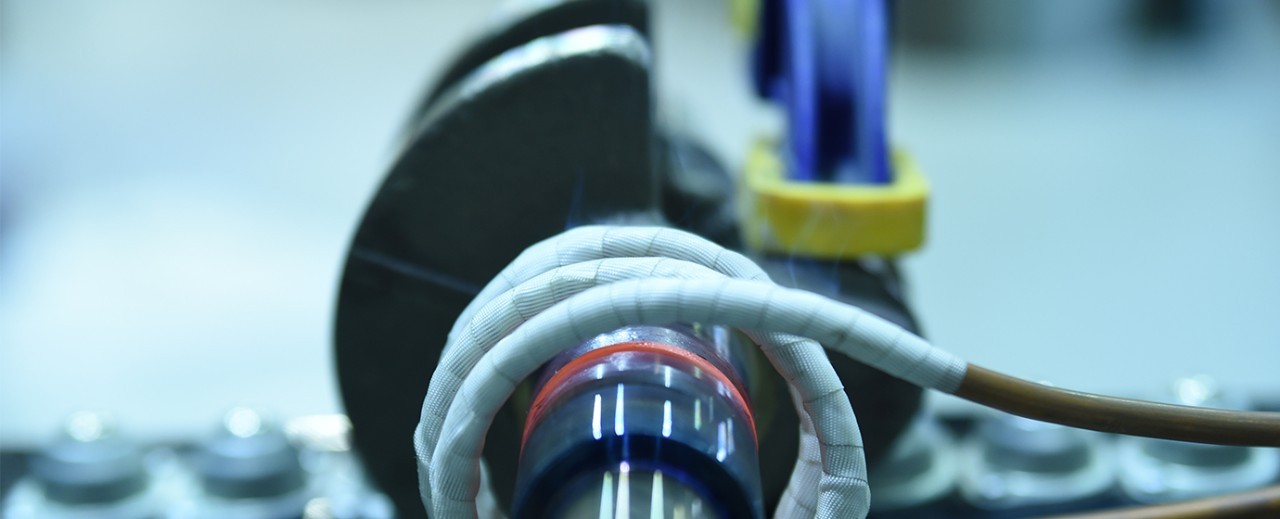Induction Heating
Induction heating has its application roots in the foundry industry during the 1930s, melting metals in a channel-type induction furnace. In the 1940s, induction technology expanded into the heat treating of engine parts. Through the years, induction has been instrumental in improving the quality of both ferrous and nonferrous metal castings. Induction heating for heat treating metals has introduced industry to high-speed automation of individual parts over slower batch processing. The protective coating's industry has also benefited from induction's unique ability to quickly water dry parts, cure paint, and even burn off paint from hooks, hangers and load bars.
How Induction Works
In a basic induction heating setup, a solid state power supply sends an alternating current through a coil which creates an electro-magnetic field. The material to be heated is placed inside the magnetic field where eddy currents are induced within the part. These currents flow against the electrical resistivity of the metal generating precise and localized heating. No direct contact with the part is required.
Induction heating works only with electrically conductive materials, normally metals. However, plastics and other non-conductive materials can often be heated indirectly by first heating a conductive metal in proximity, called a susceptor, which transfers heat to the non-conductive material.
When heating conductive materials, the heating depth is easily controlled by the frequency of the electric current applied to the coil. This technology is ideal for automating industrial processes because no actual contact is made between the material being heated and the heat source or induction coil. Induction heating is often used where repetitive, high-volume operations are performed. Once an induction system is calibrated for a part, work pieces can be loaded and unloaded automatically.

Induction coil in idle position.

Heating effect of induction coil.
Induction Heating at our Technology Applications Center
The TAC can demonstrate induction heating solutions including the rapid heating of metals, selective heat treating, the curing of paints and adhesives, and the burn off of organic build-up from parts and fixtures. In addition to the technology demonstrations, the TAC staff can assist you in your quest for continuing process improvement with targeted evaluations and product testing of your specific application.
Contact us to schedule an appointment.
